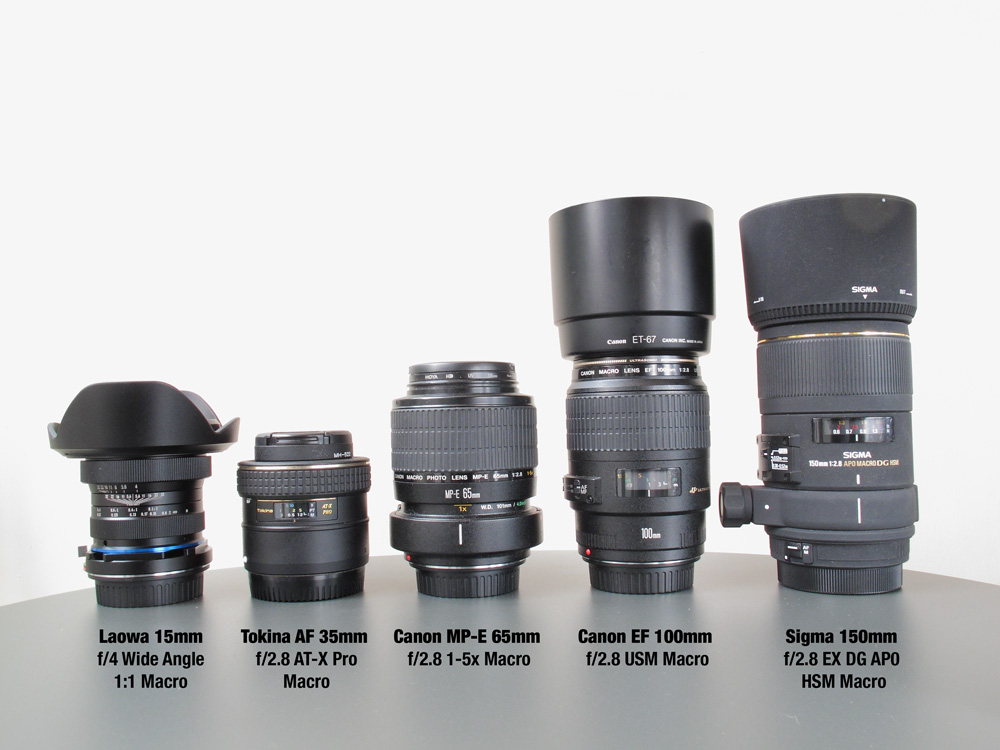As a wildlife macro photographer I have a range of lenses which allow me to capture different compositions of the same subject. My favourite lens is the Canon MP-E 65mm f2.8. It’s superb for high magnification images and for capturing the smallest of insects. I then have the flexibility with different lenses, and this is where the Sigma 150mm macro, Tokina 35mm macro and Laowa 15mm macro are indispensable; it means that I can be adaptable and take a variety of habitat images of insects and fungi. I also pack the Canon G12 too, it’s small, light and great for environmental captures. It’s an enjoyable camera to use and the smaller sensor provides greater depth of field. I carry two DSLRs; the Canon 7D and Canon 40D. Whilst it doesn’t fit in the bag, I will often carry my tripod with fixed manfrotto 410 geared head and micro-rail. The extra stability of this set-up is particularly suitable for focus-stacking and for capturing docile early morning or late evening insects.
When traveling I always like to take two camera bodies with me. This gives me the reassurance of having a second camera should my primary camera fail for whatever reason, but also having a second body means that I can leave a different lens attached to each body and be ready to shoot at any time without having to change lenses. This provides a lot more freedom when shooting and also helps reduce tiresome dust spots that tend to be attracted to the sensor when changing lenses. It may look a lot but most of my camera gear will fit into my large back-pack. However, this weight does put rather a lot of stress on my back. Since having a hernia operation I’ve been working on reducing the size and weight of my kit so that I can take with me only the gear that I think I will need.

